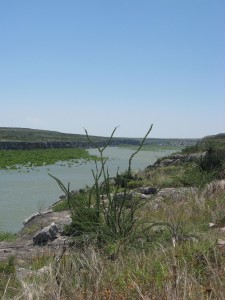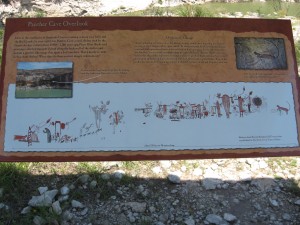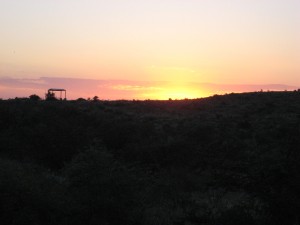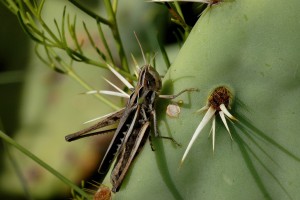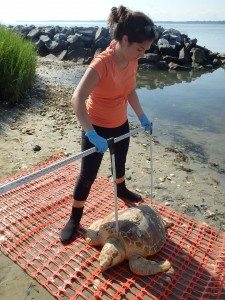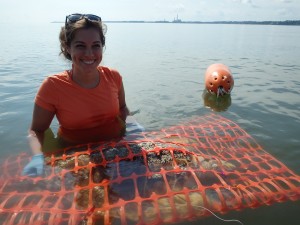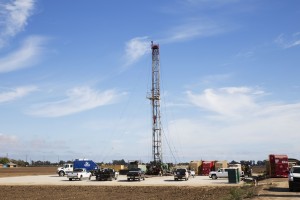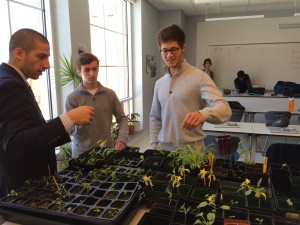This summer, Dr. David Taylor, one of our newest faculty members, spent time traveling out west. Below is a blog post he wrote during his experience for the Center for Humans and Nature, a reflection on his experience as a modern-day person navigating a traditionally rugged and natural part of the U.S.
We encourage you to take a read! His work is reposted with permission, below:
Home(page) on the Range?
Seminole Canyon State Park and Historic Site, a few miles from Comstock, TX along the Rio Grande and the Seminole/Presa Canyon
June 3-4, 2015
This past year I took a job at Stony Brook University in Long Island, New York—sorry, I live “on” Long Island, as the locals say, not “in” it. I’ve learned that making a bagel is a fine art, “Howyadoin’?” is one word, and you better have an Express Pay toll tag or $20 in your billfold if you want off the island. My parents had to find Long Island on the map since it’s north of the Mason-Dixon, and more than a few Texas friends offered repetitions of the Pace picante commercial, “New Yawrk City!” Snow is a viable part of winter now, a new experience for me. It was a good year, though, of new friends and a new culture.
Stony Brook is halfway along the north side of the island and is suburban-rural, not the urban Long Island that folks imagine, which is closer to Manhattan. Where I live, the Canada geese honk their way from one river bay to another just above the treeline; white-tailed deer are dangerously plentiful; and the villages along Highway 25A protect their quaint character tooth and claw from big box stores, McDonalds, and additional development. It’s a connected place—folks and critters together on an island, a long one—but an enclosed space nonetheless. Often I longed for open views of unpeopled space, but the forests, quaint villages, and weekend Manhattanites conspired against me. If you want vistas on Long Island, you have to head to a shore and look out onto the ocean. Yes sir, all this has been an adjustment for a newbie New Yorker.
* * * * *
I’m a Texan. I say that knowing it carries a lot of cultural, political, and land use baggage. I’ll leave any discussion of politics alone since current Texas politics baffles me. (No, Governor Abbott, the U.S. military isn’t about to invade Texas. Sigh.)
Despite the oddities, we Texans with long histories in our state do tend to enjoy open, unpeopled land; it’s part of my parents’ lives in west Texas, part of our genealogy, and part of the way we get by. Red dirt, dry canyons, mesquite, coyotes, buzzards, and good stories (with a fair amount of bullshit added) of what goes on upon the open range are as much the core of my heritage as the three-inch-thick, family Bible my mom keeps on the coffee table.
When my summer break from Stony Brook came ‘round, I told everyone, “I’m heading west, just to see open land.” I dropped off my dog with my parents in Dallas and am now traveling from Texas to Washington and back, camping as often as I can. My two-month route is more about friends and places to visit than timeliness, so the path isn’t direct but a sort of wandering with a loose schedule. The goal was to have some time to hike during the day and read and write in the evenings, mostly at campsites but occasionally, when necessary, a cheap hotel.
I hadn’t really wanted to cut off all correspondence, so I added an autoreply to my email:
Hey all,
I am hiking and car camping the west from May 29-August 1. I should have internet access off and on, but it may take me a day or two to respond–at least I hope I’m far enough away from wifi not to respond quickly.
Have a great summer.
Best,
David/Dr. T
I had no idea the irony of that line about WiFi.
My first direction was south and west from Dallas-Forth Worth, visiting friends in the Hill Country and looking over the recent devastating floods along the Blanco River. From there, I headed west to Eagle Pass to visit Carol Cullar, matriarch of all wild things in her area along the Rio Grande. Along the way from Kerrville to Eagle Pass, I lost cell reception, so I also lost Google Maps on my phone to guide me. It was briefly disconcerting, but I knew by heading west, eventually I’d find the Rio Grande and then could drive north or south to my destination.
Strangely, as time passed, it became freeing to see the “No Service” alert on my phone. No calls. No texts that required me to pull over to read. Just good ole west Texas AM radio in English and Spanish, a little norteño music to boot.
* * * * *
I’m 53 years old. Old enough to have been an adult before cell phones, PCs, and the Internet. As a kid, I spent my summers wandering in the woods by my parents’ house with no access to TV, phone, or game devices. As a college student, I typed my undergraduate and some of my graduate papers on a manual typewriter and did library research the old-fashioned way with card catalogues and reference books, some so old they smelled of animal glue. I’ve hiked and backpacked deep into wilderness areas for a week or two with no GPS, phone, or electronic device with me. Hell, I even thought at one time that sleeping pads and flashlights were for the weak. I have read and heard folks who eschew using computers and the Internet to write, take notes, or store pictures because they say it not only cheapens engagement and commitment to the nonhuman world, it severs our relationship. I understand their thoughts.
My Long Island year was good training for discerning the lines between solitude and loneliness, vistas and cramped spaces, breathing deeply and grabbing the cell phone or waiting for the ding of connection. If I was missing my family and bluebonnets in Texas from deep within three feet of northeastern snow in March, I could send a text, ask for a photo, or Skype my way to connection. I could check the weather in Texas (anywhere in the world for that matter), look on webcams to see places I know, read any local paper from any podunk town I wanted.
All of this was comforting in ways not possible thirty years ago, but it was also a lonely comfort. One morning I had to ride the train to Manhattan for a meeting. On the early or evening trains, every seat has a butt in it, but no one talks to the person next to them, unless they know each other. We all had our phones, ear buds, laptops, and tablets out; some were already working but all were certainly disengaging from their peers. When I arrived in New York, I was explicitly told not to talk to folks on the train or subway—“They’ll think you’re crazy.” Keep in mind, public transportation for a Texan is a really communal idea, but, here, the commuters’ coping mechanism for such a moshpit of humanity is only a finger slide and password away.
* * * * *
During my brief, enjoyable stay with Carol, she suggested I camp at Seminole Canyon State Park, only a few miles up the road and home to some of North America’s oldest pictographs (dating back to 7000 BC). I was ready for more hiking and less driving, so I pulled in around noon and asked the ranger if there was an available tent site. He laughed, “Yes, you’re the only one here. And likely to be. Our visitor season is November to April. Too hot and windy these days. Take campsite 13. It’s the best protected from the wind.”
Sure enough, up on the hill of designated campsites, only the wind blew for company and it was already a toasty 92. The Canyon Rim trail is listed as only slightly more than six miles, and there was no time to set up a tent or cook dinner, so I backed the car in, emptied my pack of everything but map, water, and wallet, and took off.
The trail isn’t difficult, no real elevation gain or loss, but in early June it is generally hot and windy. A jackrabbit greeted me at the trailhead before sauntering a few yards to the east, probably used to getting a few nuts thrown its way. It’s a good trail, though, and I was the only one traversing it.
This is what I had longed for during the Long Island winter: vistas, heat, and time to slowly take them in alone. So when I got to the shelter for the Panther Cave interpretive site, I sat for an hour looking across the canyon at a pictograph in the shape of panther. I also took that hour for a respite from the sun and a little solitude.
I think finally a lasting winter chill thawed inside me. The trail’s half-mile along the Rio Grande melted the remnants.
This bit of heat will be around and start the fires I’ll make in the snow and cold of February. Likely, too, this same bit of heat will lead me outdoors with my layers of winter clothing and microspikes to walk down to the beach. As cold as the ocean wind will be, the experience will stoke this fire.
* * * * *
I made my way back in time to set up my tent in the evening, driving the stakes in deep to keep the tent from becoming an untethered blue kite.
I planned to do some writing and editing during my trip, so I also pulled out my laptop and began typing notes and downloading pictures. It was a dusty dusk by then, but the screen glowed brightly in the darkening light. Here, some old essays that need mending. Maybe even a few lines of poetry churned out. Odd, I thought, as the little quarter circles lit up. I have WiFi? No cell service but Texas Parks & Wildlife WiFi? Holy crap! WiFi here … alone … in the boonies … below the meandering buzzards and a curious Harris’s Hawk?
I have to say, I felt baffled. Would I have wanted this experience ten years ago with my young daughter when she and I spent a year camping at no less than nineteen Texas parks? Would she have wanted this virtual connection instead of the books we brought? Would Richard Louv say that such electronic portals are now encouraging “nature deficit disorder”? Would Bob Pyle say having WiFi service is encouraging the extinction of experience with this place?
Damn, I thought, three days since I checked university email. Might as well see how high the work pile has grown. And after thirty seconds of watching the virtual wheel turn round and round, up popped an ugly forty emails waiting for attention. By now, the buzzards and hawk were replaced by a blustery night sky stippled with stars and washed by a full moon in the southeast sky. I wondered then what to do. Should I open them and do work? Should I count the constellations? Should I check the computer to learn more about the constellations in the sky over my head?
* * * * *
Those of us who value our time in other-than-human places face similar questions all the time. Maybe not quite so stark, but just as significant. When and where do we draw lines about respect and real engagement? When do we sever our work and dialed-in habits and ways and use our actual senses to be where we are? When do we allow the virtual world to deny us the actual? Such temptations may be greater in the city, but now we must confront them in some of the most remote areas in the country, as I was finding out.
There’s a part of me that wants TP&W to cut the connection and make folks just be here. Make those kids who’ll be unhappy with no Internet tough it out until they begin to have fun the way I did. Get a cactus thorn or two in your thumb; bloody both knees by running across a wet trail; let a grasshopper you caught spit “tobacco juice” all over your hand. Experience real things.
But I’m also of that generation that spans the advance of the Computer Age, so I wonder if this isn’t my own jeremiad against a modern, connected life. I must admit over half of my scholarly and personal reading is now done online. I have friends who listen to birdcalls and check their Audubon life list by the power of their phones. I Facebook (yes, that’s a verb), but awkwardly, never really sure how much is too much or too little, and, oh yes, we writers love it as free advertising of our new work.
Most folks who have struggled with similar topics retreat to the discussion of tools, efficiency, and work. Am I using this tool with less energy consumption to do a job better and more quickly? Am I using the tool correctly? Am I becoming addicted to using the tool? It’s certainly one way to approach the question, but I wonder if this indicates the perspective of those of us who remember what it was like pre-Internet. For younger people, it may be more of a viewpoint than a tool. My college-age students’ phones, tablets, and laptops are their library, newspapers, gathering places with friends, and even, in some instances, their initial access to other-than-human landscapes via a thousand hits with information and images.
I can only partly grasp that notion; most times, I will still take a grasshopper spitting in my hand and finding a desert willow close by to wipe it on.
* * * * *
All this to say I read half of my emails that night. I answered only those folks I knew were waiting on me for some important response. After that, I also chose to close the computer and turn my eyes toward the night skies and look at the horizons lit by moonlight. Over and above the constant wind, I heard swooshes just above my head. Bats, I smiled and leaned back in my chair, my computer safely stashed in its case. And quite honestly, I tried to grasp the significance of such connections, Internet memes and bats darting just above my head. I wish I could write that I came to a better understanding, but I am less bright than the moonlight was that evening.
Two weeks later into my trip, I’m still sorting through my reflections and choices. I wake up in the morning and try to make conscious decisions about my time—hopefully engaged at every turn. I thought writing this essay would help. I have a better understanding of when and why I need time away, but it’s a long trip, so I’m sure I have more to learn.
By the way, I just finished this essay on my computer in a Starbucks in Logan, Utah. Free Internet enabled me to submit it! (Insert smarmy emoticon.) Now I can go hike the Logan River on a trail just outside of town. I won’t bring my phone or computer with me, so I don’t care if it’s in range or not. I’ll get back to you in a few days.
All photographs by David Taylor, except for”Grasshopper on Cactus” (Big Bend National Park, Texas) by Robbie, Creative Commons license 2.0.
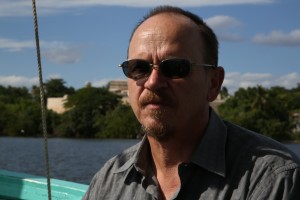 David J. Taylor, Ph.D.
David J. Taylor, Ph.D.
Visiting Professor of Sustainability
Sustainability Studies Program


